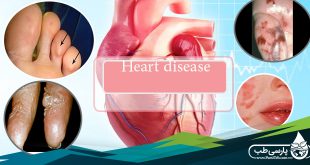A Meeting of Hearts and Minds
Every cell of the brain and the heart is held together by a membrane that is rich in fat. Studies show that fish oils — rich in omega-3 fatty acids — may be as effective as conventional drugs in alleviating unipolar and bipolar depression. And they reduce the risk of heart disease.
We often think that the heart and the mind are on separate paths. But there’s at least one issue on which they are united—the value of omega-3 fatty acids.
There is a growing group of scientists who believe that depression and heart disease could have a common cause—a diet that lacks omega-3 fatty acids. So far, the evidence is fairly circumstantial. For one thing, the twentieth century saw a parallel rise in both heart disease and depression.
For another, depression and heart disease commonly co-exist. Scientists now know that depression leads to heart disease, raising the risk fivefold, and it more than triples the risk of fatal cardiac events in those with existing heart disease. And heart disease commonly leads to depression.
Every cell of your brain, like every cell of your heart, and every other cell of the body, is held together by a membrane that is rich in fat. All communication with and between nerve cells takes place through this fat rich membrane, or envelope.
What’s more, the brain is unique in that its cells have long arms extending to other parts of the brain and body, enabling the rich network of communication between cells that underlies such complex experiences as feelings, thoughts, memories, learning and movement of all kinds. Each of these extensions is sheathed in a membrane rich in fat, which acts as a kind of electrical insulation maintaining the integrity of signals as they pass from one nerve cell to the next.
Scientists estimate that two thirds of the brain is made of fatty acids. These come directly from the food we eat.
Omega-3s are a specific kind of polyunsaturated fat. This type of fat keeps cell membranes fluid and flexible. As a result cells are better able to receive signals, making the brain’s and the heart’s operations more stable.
And brain cells are better able to withstand the constant assault of free radicals of oxygen given off by the intense activity that takes place there. In other words, omega-3 fats help to conserve brain energy and help us maintain mental balance.
Studies show that fish oils may be as effective as conventional drugs in alleviating unipolar and bipolar depression. And they reduce the risk of heart disease.
But how much omega-3 fat is enough? The American Heart Association recommends at least two servings of fish per week to get cardiovascular benefits. A three-ounce serving of farmed Atlantic salmon has about 1,500 mg of omega-3 fat. Fish is the recommended source of omega-3s because only marine life contains eicosapentaenoic acid (EPA) and docosahexaenoic acid (DHA), the two most accessible forms of the fats. A diet that draws on fish is likely a diet that cuts down on steak, cheese and other sources of unhealthy saturated fats.
No one knows whether there is an ideal balance of EPA and DHA and exactly what it is. In fact, it may be different for different purposes. It’s way too soon to know for sure, but some studies suggest that depression may benefit more from intake of EPA, while the balance of DHA and EPA seems especially to affect heart disease.
A safe starting point may be the proportions you get by eating fish—two to three times as much EPA as DHA. A third form of omega-3s, called alpha-linolenic acid (LNA), found in flax seeds and leafy plants, is useful because the body can convert it into EPA and DHA. But the conversion process is slow, and the same mechanism converts parts of soybean, corn and safflower oils into inflammatory omega-6s, which most Americans already consume in abundance. The production of EPA and DHA could be stymied if your body is already occupied processing omega-6.
Several factors control the amount of omega-3 available for use in the body: the amount of EPA and DHA in your diet, how much is converted from LNA and how much omega-6 your body is producing.
Where can you find omega-3s? They’re most abundant in fish like tuna, mackerel, herring, salmon and sardines. The smaller the fatty fish, the better, because the lower down a creature is on the food chain, the lower the concentration of toxic minerals that has accumulated in the fat. Omega-3s are also in walnuts and flaxseeds.
And, increasingly, they’re on your grocer’s shelf. From eggs to salad dressing to waffles, food manufacturers are rushing to market a variety of products fortified with omega-3s.
Wherever you find them, omega-3s are one place where your heart and mind are one.
 Parsi Teb Physical and Mental Health Journal
Parsi Teb Physical and Mental Health Journal 



